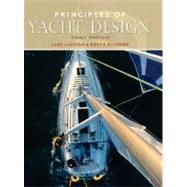
Lars Larsson, a naval architect, is a professor of hydrodynamics at Chalmers University of Technology, in Gothenburg, Sweden.
Rolf E. Eliasson, a yacht design/construction engineer specializing in boat structures, runs his own yacht design company.
| Preface to the Second Edition | |
| List of Symbols | |
| Introduction | |
| Design Methodology | |
| The design spiral | |
| Computer aided design (CAD) | |
| Preliminary ConsiderationsChoice of boat-type | |
| Intended use | |
| Main dimensions Cost | |
| Checklist of considerations | |
| Checklist for the YD - 40 | |
| Hull Geometry Definitions | |
| Lines drawing | |
| Tools Work plan | |
| Computer aided design of hulls | |
| Hydrostatics and Stability | |
| Calculation of areas Wetted surface | |
| Displacement Centre of buoyancy | |
| Water plane area | |
| Transverse and longitudinal stability at small angles | |
| Transverse stability at large angles of heel | |
| Curve of static stability | |
| Rolling Influence of waves on the righting moment | |
| Stability statistics Assessment of seaworthiness | |
| Hull Design Forces and moments on a sailing yacht | |
| Resistance components | |
| Viscous resistance, basic concepts | |
| Frictional resistance | |
| Viscous pressure resistance | |
| Roughness Wave resistance, basic concepts | |
| Influence of hull shape on wave resistance | |
| Heel resistance | |
| Added resistance in waves | |
| Other seakeeping aspects | |
| Hull statistics | |
| Keel and Rudder Design Flow around a wing | |
| Definition of the keel planform | |
| Classical wing theory | |
| Tip shape | |
| Advanced planform design | |
| Evaluation of some planform concepts | |
| Definition of the section | |
| Three useful NACA sections | |
| Influence of shape on section characteristics | |
| Some practical conclusions regarding section shape | |
| Influence of deviations from the theoretical section shape | |
| Advanced section design | |
| Statistics on keel and rudder area | |
| The YD - 40 | |
| Sail and Rig Design Flow around sails | |
| Planform Sail camber | |
| Mast interference | |
| Means for reducing mast distubances | |
| Streamlining | |
| A practical model for sail and rig aerodynamics | |
| Sail statistics | |
| Balance Effect of heel | |
| Good balance | |
| Centre of effort of the underwater body | |
| Centre of effort of the sails | |
| Lead Rudder balance | |
| Propeller and Engine | |
| Resistance in calm and rough weather | |
| Propeller characteristics | |
| Design of an optimum propeller | |
| Performance of the non-optimum propeller Check of blade area | |
| Propeller resistance | |
| High Speed Hydrodynamics Planing Deadrise | |
| Forces on a planing hull | |
| Spray rails, stepped bottoms and transom flaps | |
| Dynamic stability | |
| Alternative propulsion devices | |
| An example | |
| Rig Construction Definitions and scope of the standard | |
| Forces on the shrouds | |
| Forces on the stays | |
| Comparison between wire and rod | |
| Transverse mast stiffness | |
| Longitudinal mast stiffness | |
| Fractional mast top | |
| Boom Spreaders | |
| The YD - 40 rig | |
| Hull Construction | |
| Concepts in structural mechanics Global loads | |
| Local hydrostatic loads | |
| Local hydrodynamic loads | |
| Transverse load distribution | |
| Local deformations | |
| Forces from the keel | |
| Forces from grounding | |
| Forces from the rudder | |
| Summary of loadings | |
| Materials Glass reinforcement | |
| Wet laminates | |
| Fatigue Exotic laminates | |
| Sandwich Typical sandwich buckling | |
| Sandwich bending Sandwich in practice | |
| Final remarks | |
| Scantling Determination | |
| Structure of the ISO Standard | |
| Hull definitions | |
| Basic laminate | |
| Design loads for the bottom | |
| Design loads for the topsides | |
| Design loads for the decks and bulkheads | |
| Design loads for the internals | |
| Longitudinal impact distribution factor | |
| Area reduction factor | |
| Panel calculation | |
| Stiffener calculation | |
| Spade rudder stock | |
| Chainplates and keelbolts | |
| Sandwich construction | |
| The YD - 40 scantlings | |
| Layout Generic space requirements | |
| Accomodation Deck layout | |
| Design Evaluation Non-dimensional parameters | |
| The Velocity Prediction Program (VPP) Towing | |
| Table of Contents provided by Publisher. All Rights Reserved. |
The New copy of this book will include any supplemental materials advertised. Please check the title of the book to determine if it should include any access cards, study guides, lab manuals, CDs, etc.
The Used, Rental and eBook copies of this book are not guaranteed to include any supplemental materials. Typically, only the book itself is included. This is true even if the title states it includes any access cards, study guides, lab manuals, CDs, etc.